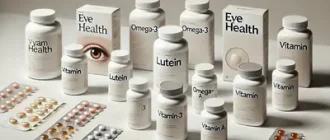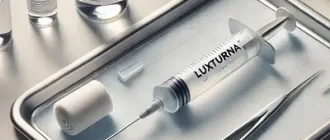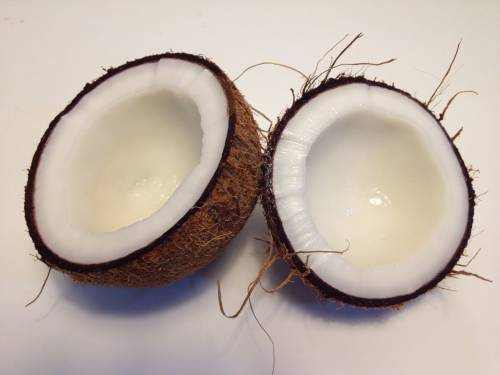When your eyes start to feel dry, itchy, or irritated, choosing the right drops can make all the difference. From dry eye and allergies to pink eye or fatigue, each type of over-the-counter (OTC) eye drop targets a specific cause. Knowing what’s behind your symptoms helps you pick the formula that truly soothes rather than simply masks the problem.
Best OTC Eye Drops: How to Choose
Choosing the right eye drops is a bit like selecting the correct tool for a specific job — a hammer won’t fix everything, and the same goes for your eyes. The most effective drop depends on what’s actually causing your discomfort.
Common reasons for using OTC eye drops include:
- Dryness: Often linked to digital screen use, low humidity, or aging tear glands.
- Soreness: May result from fatigue, allergies, or mild irritation.
- Infection (Pink Eye): Needs careful evaluation — viral and bacterial types differ greatly.
- Allergic Reactions: Triggered by pollen, pet dander, or dust mites.
- Itching: Usually allergy-related but can sometimes signal blepharitis.
- Pain or Swelling: May stem from inflammation, injury, or eyelid issues.
- Discharge (Mattering): Indicates possible infection or blocked tear ducts.
Just as you wouldn’t treat every headache the same way, not every eye symptom benefits from the same drop. Understanding the root cause — dryness versus infection, for instance — determines whether you need lubricating drops, antihistamines, or antibiotic treatment.
Analogy: Think of your eyes as a self-cleaning pool — they’re constantly filtering and moisturizing themselves. When the system goes out of balance (due to environment, fatigue, or bacteria), you may need the right “chemical adjustment” — the right type of eye drop — to restore harmony.
And remember: if your symptoms persist beyond a few days, change unexpectedly, or are accompanied by pain or vision changes, that’s your cue to see an optometrist. No one should gamble with their vision.
Over-the-Counter Eye Drops vs. Prescription Eye Drops
Eye drops generally fall into two categories:
- Over-the-Counter (OTC) Eye Drops: Easily available at pharmacies and supermarkets, these are ideal for mild symptoms such as dryness, fatigue, or allergies. They’re often the first step toward relief and can be quite effective when used correctly.
- Prescription (Rx) Eye Drops: These are targeted, doctor-prescribed medications for more serious or chronic conditions like bacterial infections, glaucoma, or severe dry eye syndrome. Prescription drops may contain antibiotics, corticosteroids, or immunomodulatory agents that require professional supervision.
OTC drops are convenient and cost-effective — perfect for temporary issues like mild irritation or eye strain. However, if your eyes remain red, painful, or produce unusual discharge, a doctor’s visit is crucial. Persistent inflammation could indicate underlying conditions like blepharitis, keratitis, or even autoimmune dry eye disease (Sjogren’s syndrome).
Modern Advances in Eye Drop Technology
Recent innovations have brought forward new formulations that last longer and feel more natural on the eye:
- Nanotechnology-based lubricants that improve absorption and reduce blur.
- Electrolyte-balanced artificial tears that mimic natural tear composition.
- Smart contact-compatible drops designed to hydrate lenses and eye surfaces simultaneously.
- Preservative-free multidose systems that maintain sterility without harsh chemicals.
These advancements make modern eye drops safer, longer-lasting, and more comfortable than ever before.
Expert Insight: Reyus Mammadli, medical consultant, emphasizes: “Choosing an eye drop today isn’t just about soothing discomfort — it’s about supporting eye health. Look for modern, preservative-free formulas that mimic natural tears and adapt to your lifestyle, especially if you use digital screens daily.”
Best Eye Drops for Dry Eyes (2025 Update)
Dry eyes are one of the most common eye complaints worldwide, often caused by prolonged screen use, aging, environmental factors, or certain medications. When your eyes don’t produce enough tears or when your tears evaporate too quickly, discomfort, burning, and blurred vision can occur.
Understanding Dry Eyes and How Drops Help
Lubricating eye drops, also known as artificial tears, are designed to supplement your natural tear film and provide instant relief. They mimic the components of real tears — including water, lipids, and electrolytes — to restore comfort and hydration. These drops are best suited for temporary dryness caused by computer use, wind exposure, air conditioning, or fatigue.
It’s best to avoid decongestant eye drops (often labeled for “redness relief”) when treating dryness. While they can make your eyes appear whiter, they don’t address the root cause and can actually worsen dryness over time.
For more persistent dry eye symptoms, lubricating gels or ointments may be needed. These are thicker and provide longer-lasting protection but can blur vision temporarily, so they’re best applied before bedtime.
If OTC products don’t provide relief, see your eye doctor for prescription treatments (such as cyclosporine or lifitegrast drops) or procedures like punctal plugs, which help preserve your natural tears.
Recommended OTC Eye Drops for Dry Eyes
These over-the-counter eye drops have consistently proven effective for mild to moderate dry eye symptoms:
1. Visine All Day Comfort Dry Eye Relief
Best for: Temporary dryness caused by environmental factors
Key benefits: Provides quick relief within seconds and lasts up to 10 hours. Formulated with a unique moisture blend developed from decades of Visine’s clinical research. Ideal for office workers or people exposed to dry air.
2. Systane Ultra Lubricant Eye Drops
Best for: Long-lasting protection and digital eye strain
Key benefits: Offers extended comfort for dryness caused by screen fatigue. The advanced polymer system provides lasting moisture and helps stabilize the tear film. Available in both preserved and preservative-free versions for sensitive eyes.
3. TheraTears Lubricant Eye Drops
Best for: Restoring the natural tear balance
Key benefits: Developed by ophthalmologists, TheraTears features a hypotonic, electrolyte-balanced formula that helps correct the salt imbalance responsible for dry eye symptoms. Its oxygen-releasing preservative ensures the solution becomes preservative-free upon contact with the eye.
Expert Tips for Managing Dry Eyes
- Follow the 20-20-20 rule: Every 20 minutes, look 20 feet (6 meters) away for 20 seconds to reduce strain.
- Stay hydrated: Proper hydration supports tear production.
- Use a humidifier: Especially in winter or air-conditioned environments.
- Blink consciously: People tend to blink less when using digital devices.
- Consider omega-3 supplements: They may help improve tear quality and reduce inflammation.
Expert Insight: Reyus Mammadli, medical consultant, explains: “The key to treating dry eyes isn’t just choosing the right drops — it’s consistency. Using preservative-free artificial tears several times a day can prevent chronic irritation and help maintain long-term eye health.”
Best OTC Eye Drops for Inflammation (2025 Update)
Red, inflamed eyes can be caused by anything from fatigue and allergies to infection or irritation from contact lenses. While many over-the-counter (OTC) drops provide quick cosmetic relief, understanding the underlying cause of inflammation is key to effective treatment.
Understanding Inflammation and Redness in the Eyes
Decongestant eye drops, often labeled as “redness relief” or “whitening” drops, contain vasoconstrictors — ingredients that shrink small blood vessels on the sclera (the white part of your eye), making redness less visible. While these drops can quickly brighten your eyes, their effect is temporary and may hide underlying problems such as dry eye syndrome, allergies, or even infection.
Frequent use of vasoconstrictive drops can cause side effects such as:
- Dryness and irritation
- Dilated pupils
- Rebound hyperemia — when redness worsens after the drops wear off
To avoid dependency and worsening redness, these drops should be used only occasionally and never as a long-term solution.
If your eyes are red due to dryness, tiredness, or lack of sleep, lubricating drops (artificial tears) can help restore comfort. For allergy-related redness, antihistamine or lubricating drops are often effective, as they wash allergens (like pollen or dust) away from the eye surface.
Recommended OTC Eye Drops for Eye Inflammation
The following types of drops are commonly recommended by eye care professionals for mild redness or inflammation:
1. Lubricating (Artificial Tear) Drops
These are the safest and most versatile option for mild redness caused by dryness or fatigue. Look for preservative-free formulations to minimize irritation. Popular options include Systane Hydration PF, Refresh Optive, and TheraTears Lubricant Eye Drops.
2. Antihistamine/Decongestant Combination Drops
For redness due to allergies, drops containing naphazoline or pheniramine (such as Naphcon-A or Visine Allergy Relief) can be helpful. However, they should only be used for short periods (no longer than 3 days) to avoid rebound redness.
3. Eye-Whitening Formulas with Advanced Technology
Modern redness-relief drops such as Lumify (brimonidine tartrate 0.025%) work differently from traditional vasoconstrictors. They selectively target specific receptors in blood vessels, reducing redness without causing rebound hyperemia. Lumify has become a top recommendation for occasional cosmetic redness control.
4. Eyelid Hygiene Products
For inflammation linked to eyelid conditions like blepharitis or meibomian gland dysfunction, cleaning the eyelid margins helps relieve irritation. Products containing tea tree oil (like specialized eyelid cleansing oils or foams) can safely reduce bacterial buildup and soothe inflamed skin around the eyes. Always ensure the product is ophthalmologist-tested and designed specifically for eyelid use.
When to See an Eye Doctor
Persistent redness, pain, or swelling should never be ignored. These can indicate serious conditions such as uveitis, keratitis, or glaucoma. If redness doesn’t improve within 48–72 hours of OTC treatment, schedule an eye exam.
Expert Advice: Reyus Mammadli, medical consultant, recommends using redness-relief drops only as a short-term solution. “Many people reach for brightening drops daily, but overuse can lead to chronic irritation. For long-term eye comfort, focus on hydration, eyelid hygiene, and regular eye exams.”
Practical Eye Care Tips
- Follow the 20-20-20 rule to reduce eye strain (every 20 minutes, look 20 feet away for 20 seconds).
- Get 7–8 hours of sleep per night to reduce eye fatigue.
- Use a humidifier if you live in a dry climate.
- Keep your eyelids clean with gentle cleansers or wipes formulated for sensitive eyes.
By choosing the right OTC drops and maintaining consistent eye hygiene, you can reduce inflammation safely and keep your eyes looking healthy and refreshed.
Best OTC Eye Drops for Allergy and Eye Itching (2025 Update)
Allergic eye irritation is one of the most common seasonal complaints, especially during spring and fall when pollen counts rise. Antihistamine eye drops are specifically designed to relieve itching, redness, and watering caused by allergic reactions. They work by blocking histamine, a natural compound that triggers inflammation in the eye tissues.
How Allergy Eye Drops Work
When allergens such as pollen, pet dander, or dust come into contact with your eyes, your immune system releases histamines. This causes symptoms like itching, tearing, redness, and swelling of the eyelids. Antihistamine drops act quickly to neutralize these reactions and bring relief within minutes.
Some formulations also combine antihistamines and decongestants, helping to reduce redness and puffiness. However, ophthalmologists caution against using decongestant-based drops for more than a few consecutive days, as they can cause rebound redness and dryness.
If itching is intense or persistent despite OTC treatments, an eye doctor may prescribe stronger antihistamine or steroid-based eye drops, or recommend oral antihistamines for systemic control of allergy symptoms.
Recommended OTC Eye Drops for Eye Itching and Allergy Relief
More than 50 million Americans experience seasonal or year-round eye allergies, and the right drops can make a world of difference. Below are two of the most trusted options available in 2025:
1. Zaditor Antihistamine Eye Drops
Best for: Quick relief from itching and redness
Key ingredient: Ketotifen fumarate 0.025%
Duration: Up to 12 hours per dose
Zaditor offers fast-acting, long-lasting relief from itchy eyes due to pollen, pet hair, and other allergens. It is non-vasoconstrictive, meaning it won’t cause rebound redness, and is safe for children aged 3 and older. Its prescription-strength formula makes it one of the most effective OTC antihistamine options available today.
2. Pataday Once Daily Relief
Best for: All-day protection against eye allergies
Key ingredient: Olopatadine hydrochloride 0.2%
Duration: 16–24 hours per dose
Pataday works within minutes to relieve itching, watering, and irritation by blocking histamine release at the source. Its once-daily formula is ideal for people with busy lifestyles or those seeking consistent, all-day comfort. Ophthalmologists frequently recommend it for moderate to severe allergic eye symptoms.
When to See a Doctor
If OTC antihistamine drops fail to bring relief, or if symptoms include severe swelling, light sensitivity, or thick discharge, it’s best to consult an ophthalmologist. Some cases may require prescription-strength medications or allergy testing to identify and eliminate the underlying trigger.
Expert Insight: Reyus Mammadli, medical consultant, advises, “When eye allergies persist for more than a few weeks, combining OTC drops with environmental control—like using air purifiers and avoiding rubbing your eyes—offers the most sustainable results.”
Practical Prevention Tips
- Wear sunglasses outdoors to protect eyes from airborne allergens.
- Keep windows closed during high-pollen days and use HEPA filters at home.
- Wash your hands and face after being outdoors to remove pollen.
- Avoid using decongestant eye drops for longer than 72 hours.
By choosing the right OTC antihistamine eye drops and following simple preventive steps, you can enjoy clearer, more comfortable vision even during peak allergy seasons.
Best OTC Eye Drops for Soreness, Swelling, or Discharge (2025 Update)
Before reaching for over-the-counter (OTC) eye drops to treat soreness or swelling, it’s essential to understand the root cause of your symptoms. Eye discomfort can arise from dryness, digital strain, allergies, or mild irritation, but sometimes it signals something more serious.
Understanding Why Your Eyes Feel Sore or Swollen
Eyes may become sore or swollen due to overuse, lack of sleep, or extended screen time, leading to dryness and strain. These symptoms are often temporary and respond well to lubricating or rewetting drops.
However, persistent pain or inflammation can indicate an underlying condition — such as allergic conjunctivitis, blepharitis, or bacterial infection. If your eyes consistently ache or produce thick, yellow discharge (often called “mattering”), an eye exam is necessary. Such cases may require prescription antibiotic eye drops to properly address infection.
Other common causes include:
- Allergies: Result in itchiness, swelling, and watery discharge.
- Environmental irritants: Smoke, dust, and pollution can make eyes red and puffy.
- Contact lens wear: Overuse or improper cleaning can lead to soreness and mild inflammation.
OTC Eye Drops That Can Help Relieve Soreness, Swelling, or Mild Discharge
The following categories of OTC drops are recommended for mild discomfort, allergic irritation, and general soreness:
1. Lubricating (Artificial Tear) Drops
These drops hydrate and soothe the eyes, especially after long hours of screen time or exposure to dry air. Look for preservative-free formulas designed for sensitive eyes. Popular examples include products from Refresh, Systane, and TheraTears.
2. Antihistamine Eye Drops
Ideal for allergy-related redness, itching, and swelling. Modern formulas with ketotifen fumarate or olopatadine provide 12 to 24 hours of relief and are safe for daily use. Brands like Alaway and Pataday are widely recommended by ophthalmologists.
3. Decongestant + Lubricant Combinations
Drops containing naphazoline or tetrahydrozoline help reduce redness and mild puffiness. However, these should be used for short-term relief only (no more than three days) to avoid rebound redness.
4. Cooling and Soothing Gel Drops
Gel-based lubricants create a thicker protective layer for nighttime use or severe dryness. They help restore comfort in cases of fatigue-related soreness and mild swelling.
When to See a Doctor
If your eyes produce thick discharge, if the whites of your eyes turn bright red, or if you experience blurred vision or light sensitivity, professional care is essential. Some conditions, such as bacterial conjunctivitis or uveitis, require prescription treatment.
Expert Insight: Reyus Mammadli, medical consultant, notes, “When soreness or swelling lasts longer than a couple of days, self-treatment isn’t enough. OTC drops can help with symptoms, but ruling out infection or allergies through an eye exam is key to long-term relief.”
Practical Tips for Relief
- Follow the 20-20-20 rule: Every 20 minutes of screen time, look 20 feet (6 meters) away for at least 20 seconds.
- Keep eyes clean and avoid touching them with unwashed hands.
- Use cold compresses to reduce puffiness and irritation.
- Replace contact lenses as recommended by your optometrist.
Staying consistent with these simple habits, along with the right OTC drops, can prevent most cases of eye soreness and swelling and keep your vision clear and comfortable throughout the day.
Best Eye Drops for “Pink Eye” and Other Eye Infections (2025 Update)
Pink eye, medically known as conjunctivitis, is one of the most common eye conditions in both adults and children. It can be uncomfortable, contagious (in some forms), and highly irritating. The term “pink eye” covers several types of conjunctivitis — bacterial, viral, and allergic — each requiring different care and treatment.
Understanding the Different Types of Pink Eye
Bacterial conjunctivitis typically causes intense redness, soreness, and a thick yellow or green discharge that can make your eyelids stick together. This type requires prescription antibiotic drops, such as moxifloxacin or tobramycin, available only through an eye doctor.
Viral conjunctivitis is contagious and often linked to colds or respiratory infections. While mild cases clear up on their own, more severe ones cause watery eyes, light sensitivity, and blurry vision. OTC lubricating eye drops and cold compresses can help soothe discomfort, but persistent symptoms should be checked by an ophthalmologist.
Allergic conjunctivitis — the most common form in the U.S. — results from exposure to allergens like pollen, pet dander, or dust. It’s not contagious, but it can make your eyes red, itchy, and swollen. Non-prescription antihistamine and lubricating eye drops can provide quick relief. Popular oral antihistamines such as Zyrtec, Claritin, or Benadryl may also help minimize itching and swelling.
Note: Never let the tip of your eye drop bottle touch your eye or lashes. This can contaminate the bottle and spread infection.
Recommended OTC Eye Drops for Pink Eye (Conjunctivitis)
Pink eye is surprisingly common — most people know someone who’s had it at least once. Fortunately, mild cases are treatable with over-the-counter (OTC) eye drops that reduce redness, irritation, and swelling.
1. Similasan Pink Eye Relief Drops
Best for: Mild pink eye symptoms and irritation
Approx. price: $8–$10 (10 mL)
Similasan Pink Eye Relief is a natural, homeopathic formula that provides gentle relief from redness, burning, dryness, grittiness, and watery discharge. It contains no harsh chemicals or vasoconstrictors and is safe for both adults and children ages 2 and up.
2. Refresh Relieva for Redness Relief
Best for: Irritation and redness caused by dryness or minor infections
Approx. price: $10–$13 (15 mL)
Formulated with carboxymethylcellulose and glycerin, Refresh Relieva soothes and hydrates the eyes while minimizing redness and discomfort. Although it doesn’t treat bacterial infection, it helps maintain comfort during healing and recovery.
3. Alaway Antihistamine Eye Drops
Best for: Allergic conjunctivitis (itchy, swollen eyes)
Approx. price: $12–$15 (10 mL)
Containing ketotifen fumarate (0.035%), Alaway provides fast-acting, long-lasting relief from itching and redness caused by seasonal allergies. It’s safe for daily use and can be used alongside oral antihistamines for stronger effect.
Expert Insight: According to medical consultant Reyus Mammadli, “Many pink eye cases resolve without antibiotics, but comfort drops can dramatically improve recovery. Always choose preservative-free formulas if you use them more than four times a day.”
Best Eye Drops for Contact Lens Wearers (2025 Update)
Rewetting drops are specially formulated for contact lens users to relieve dryness, burning, and irritation caused by daily wear. These drops mimic the natural tear film and help maintain hydration throughout the day — a must-have for anyone who spends long hours in front of digital screens.
If you plan to use regular over-the-counter (OTC) lubricating eye drops while wearing contacts, always consult your eye care professional first. Not every formula is lens-friendly — some can cloud your lenses or even damage them over time.
Unlike rewetting drops, many other OTC or prescription eye drops are not intended for contact lens users. In those cases, lenses should be removed before application to prevent residue buildup or discomfort.
Recommended Contact Lens Lubricating Eye Drops
Using eye drops with contact lenses is practically universal — even non-users know the struggle of dryness. Below are the most trusted and recommended rewetting drops currently available on Amazon (as of 2025).
1. Blink Contacts Lubricating Eye Drops
Best for: All-day comfort and natural tear compatibility
Approx. price: $8–$10 (15 mL)
Blink Contacts Lubricating Eye Drops moisturize dry contact lenses by working with the eye’s natural tears, keeping them fresh and silky-smooth. Once applied, the preservative in the formula breaks down into harmless tear components (water and sodium chloride), making it effectively preservative-free once in the eye.
Available on Amazon ⧏
2. Opti-Free Puremoist Rewetting Drops
Best for: Daily lens wearers exposed to dust or dry environments
Approx. price: $9–$12 (12 mL)
Throughout the day, airborne particles can collect on your lenses, making them dry and uncomfortable. Opti-Free Puremoist Rewetting Drops gently remove those particles, keeping your lenses comfortable longer.
They can be used several times a day to prevent protein buildup on soft lenses — meaning less irritation and more lasting comfort.
Opti-Free Puremoist drops are easy to use without removing your lenses — perfect for those “no time to blink” days at work or while traveling.
Available on Amazon ⧏
3. Refresh Contacts Comfort Drops
Best for: Sensitive eyes and long wear
Approx. price: $8–$11 (15 mL)
Each drop forms a soft liquid cushion that soothes and protects the eye for long-lasting relief. Refresh Contacts Comfort Drops come in a convenient multi-dose bottle, safe for frequent use throughout the day.
These drops are widely recommended by ophthalmologists for contact lens users experiencing dryness or mild irritation.
Available on Amazon ⧏
Quick Tip: According to medical consultant Reyus Mammadli, “Rewetting drops should match your lifestyle — if you spend 6+ hours with lenses, choose a formula with sodium hyaluronate for longer hydration and less friction.”
Question and Answers Regarding OTC Eye Drops
How do I practice good hygiene when putting in eye drops?
Just like a lot of things related to your eyes (like putting in contacts), thoroughly wash your hands first, and continuously prevent touching your eye straight. As soon as your hands are tidy, carefully take down your bottom cover and make a well, then launch the drop, so it lands in there – keeping the dropper far enough away, so it doesn’t, in fact, reach your eye. It will make a small pool of liquid.
Then, plug the inside corner of your eye (near the nose), so the drops can drain down your septum. Put a bit of pressure on the nasal side of your eyes, close your eyes, and tilt your head towards the ground. This enables the drop to linger on the cornea, which is the only area that absorbs the drop. Putting your eye drops in like this method will maximize their advantage, and keep you from getting an eye infection due to bad health.
How many drops do I require in each eye?
Just one per eye! One drop is all that’s required to work. If you’re recommended four drops, consult your doctor, but this probably ways you need to put one drop in each eye four times per day. Adhering to only one drop in each eye will assist your prescription last longer and save you some cash, while still doing its job.
Can I do all my eye drops simultaneously, or do I need to area them out?
Let’s state you have multiple eye drops you’ve been provided by your medical professional. Avoid putting them in your eye straight after one another. You do not need to wait too long, however, offer yourself a minimum of 5 minutes or so in between types of eye drops. This permits each type to be absorbed by your cornea before you add the next.
Do I require to shake my eye drops?
This depends on what type of eye drops you’re using. Some medicated drops and post-surgery drops do require shaking, while others don’t. It will never harm to shake your eye drops, so it’s a good general rule to give every bottle a little shake before using them to be on the safe side.
Can I utilize eye drops when I have contacts in?
Some eye drops are safe to use when you have contacts in; however, they’re the exception, not the rule. Unless your drops explicitly state that they’re okay to utilize with contacts, eliminate your contacts before putting your eye drops in. Then, give your eyes a few minutes to absorb the drops before putting your contacts back in.
Should I buy preservative-free drops, if I have the option?
Yes! Preservative-free eye drops are normally best for your eyes, particularly if you’re using the drops multiple times a day. Synthetic tears, saline and over the counter drops are frequently offered in a preservative-free formula, so we recommend picking this when possible.
What if I taste my eye drops?
While it may sound odd, some individuals do taste their eye drops. If you’re putting them inappropriately, the drops should drain down your septum. Because of this, some patients will in fact experience a metal taste after putting in drops (this is very typical with steroid drops), and wonder if it’s okay. The response is yes. This is normal and is no cause for concern whatsoever.





